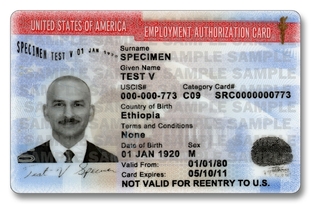- Home
- Videos
- Links
- Working with Interpreters
- Favorite Products
-
Newsletters
- December 2017
- December 2014
- June 2014
- March 2014
- December 2013
- November 2013
- October 2013 Newsletter
- July 2013 Newsletter
- June 2013 Newsletter
- March 2013
- February 2013
- January 2013
- December 2012
- November 2012
- October 2012
- September 2012
- August 2012
- July 2012
- June 2012
- May 2012
- April 2012
- March 2012
- February 2012
- January 2012
- November 2011
- October 2011
- September 2011
- August 2011
- July 2011
- March 2011
- February 2011
- January 2011
- October 2010
- September 2010
- May 2010
- April 2010
- March 2010
- September 2009
- May 2009 Remastered
- April 2009 Remastered
- February 2009 Remastered
- Healthy Body and Soul
- Upcoming Seminars
- More...
- COVID info for Medical interpreters
November 2013 Newsletter
In this Edition:
What is ISAP? What is an ITIN?
New Civil Trial Glossary
This Month's Favorite Link
What is ISAP? What is an ITIN?
New Civil Trial Glossary
This Month's Favorite Link
November was a great and busy month. We were working hard and coordinating with family for the holiday; many people didn't have time to come to the meeting. I hope you all had a wonderful Thanksgiving and wish to see you next month!

What is ISAP and ITIN?
When interpreting, we sometimes hear an unfamiliar term and we request clarification. Most of the times, these terms are slang or acronyms. It is the attorney's responsibility to define and explain procedures and programs to a defendant, not the interpreters'. As interpreters though, it is our duty to understand what is being said in order to interpret it accurately. Here are two terms I researched after hearing them in several criminal courts: The I.S.A.P: When somebody mentions that he or she is in the “Isap” program or “on “immigration probation” what this really means is that removal proceedings (deportation) have been initiated against him or her. The person was detained by ICE (Immigrations and Customs Enforcement) and he or she is accused of a federal offense such as illegal entry, overstaying the period allowed by the visa, working without a permit, tax fraud, etc. and/or he or she has a hearing pending in court. Instead of being detained in a federal prison until the day of the hearing, the person is set free under certain conditions; one of them may include wearing an ankle bracelet with a GPS device to make sure he or she appears in federal court on the date ordered. People in the ISAP program are also given an identification card with the I.S.A.P. acronym to check-in with supervising authorities and to allow entrance to the courthouse when he or she appears for the hearing. I.S.A.P. stands for Intensive Supervision Appearance Program. The I.T.I.N.: The "Itin" is issued by the IRS (Internal Revenue Service) to people who are not eligible for a social security number, such as a foreign investor with real estate in the US or a person required to file a U.S. a tax return under the provisions of a U.S. tax treaty. The ITIN is not a social security number and it does not allow a person to work. In order for an adult to work legally in the USA a person must be a US Citizen, a Permanent Resident Alien, or have an Employment Authorization Document (EAD) and have his or her own social security number. Social security numbers and cards are issued by the Social Security Administration. The ITIN, issued by the IRS, has the same format as the SSN, but the ITIN always begins with 9, for example: 987-65-4321. The ITIN cannot be used as proof of permission to work and the IRS clearly states that an ITIN does not provide eligibility for Social Security benefits or the Earned Income Tax Credit.” I.T.I.N. stands for Individual Taxpayer Identification Number. |

New Civil Trial Glossary
Collision: Colisión Preexisting health issues: problemas de salud preexistentes Automobile Insurance: seguro automotor, seguro de/para autos Liability Insurance: seguro contra terceros Full coverage insurance: seguro contra todo riesgo Deductable: franquicia To file a claim: hacer/digilenciar un reclamo, reclamar Policy: póliza Disaster/Damage/Accident: siniestro Total Loss/”totaled”: daño total, destrucción total Proximate cause: causa inmediata (For there to be compensation, the jury must be convinced that the accident was a proximate cause of any permanent injury) Permanent Injury: lesión permanente Temporary Total/TT: duración de la discapacidad completa (temporaria) Maximum Medical Improvement/MMI: nivel máximo de mejoría Trigger-point injections: injecciones en puntos de origen/en puntos disparadores (del dolor) Radiculopathy (Pinched Nerve): Radiculopatía Electromyogtaphy/EMG: electromiografía (tests nerve function) Direct evidence: Pruebas Circumstantial evidence: inferencias Desiccation: desecado Bulge: protuberancia Herniated disc: hernia de disco Spinal cord: medula espinal Spinal column/spine: columna vertebral/espina dorsal Back: espalda Lower back: cintura Life expectancy: esperanza/expectativa de vida (estimation of how long a person has left to live) |

